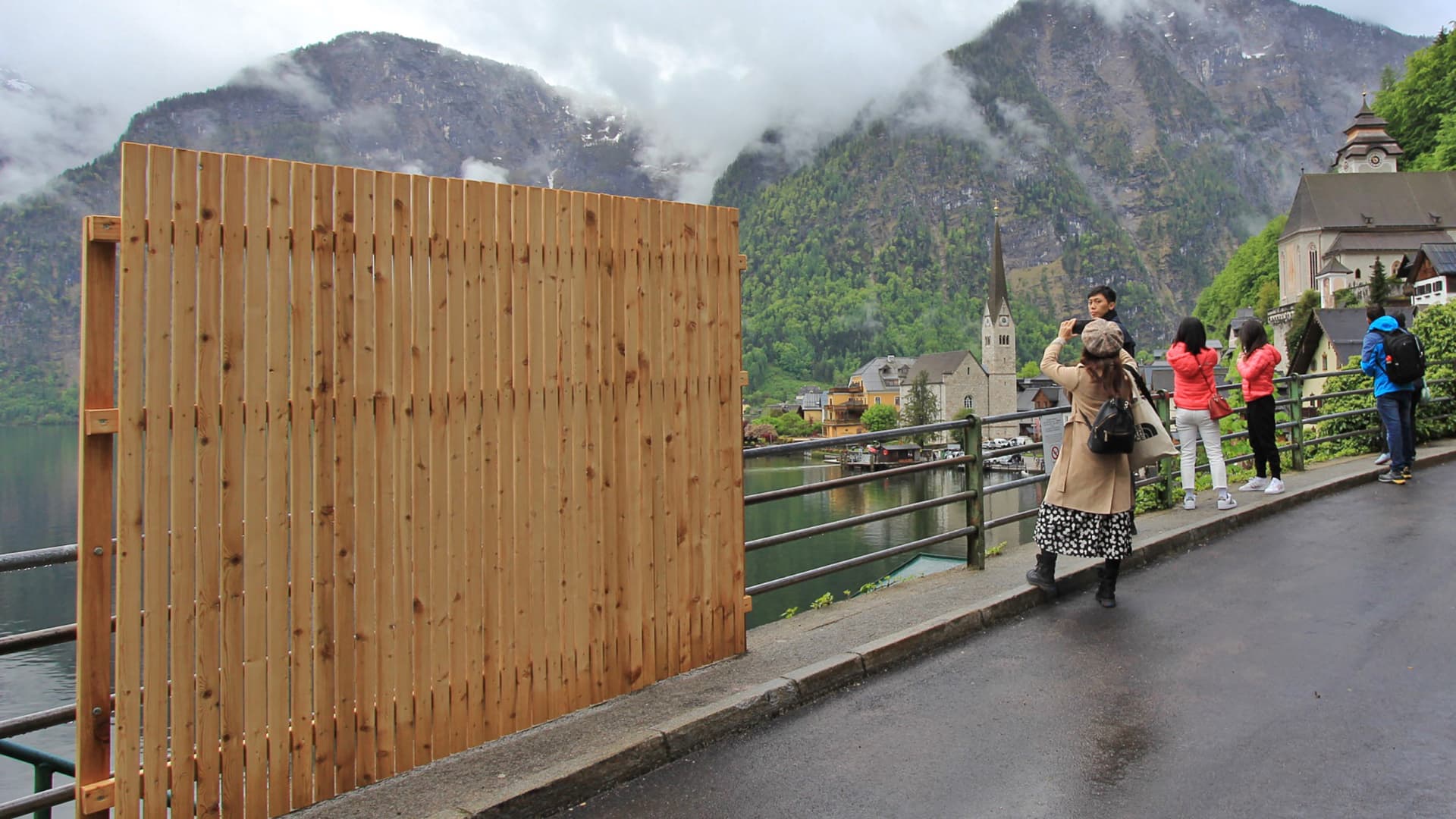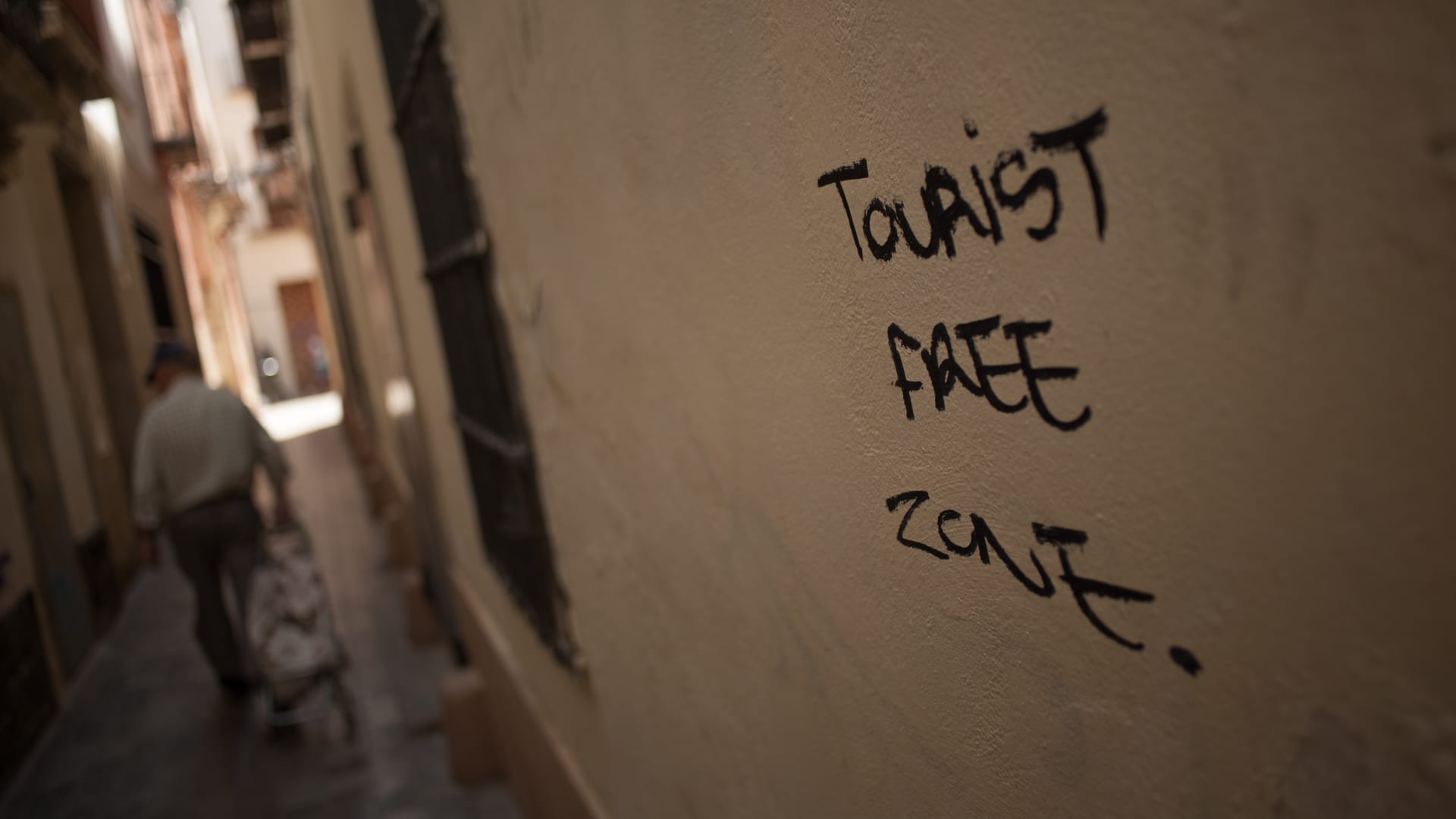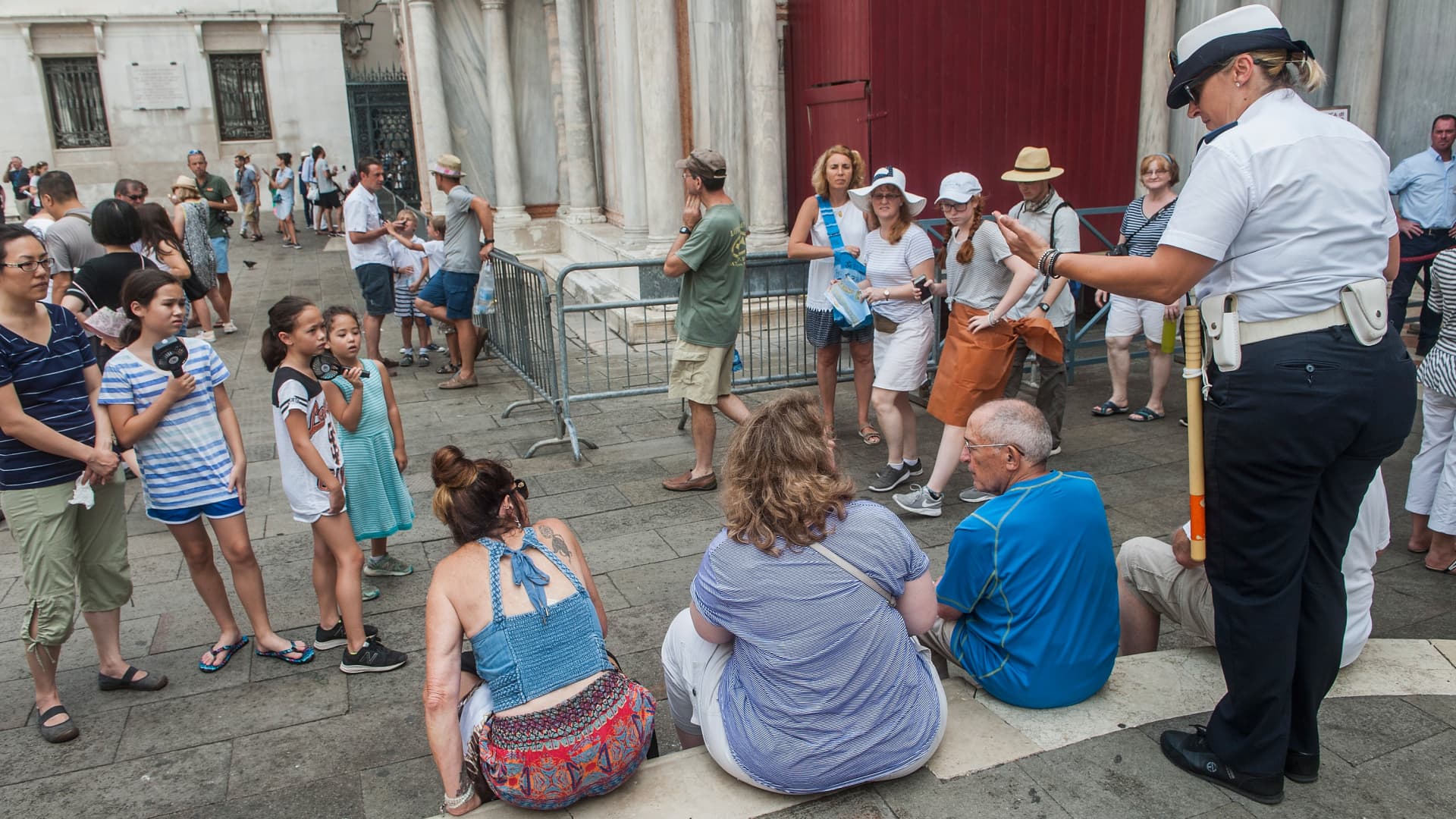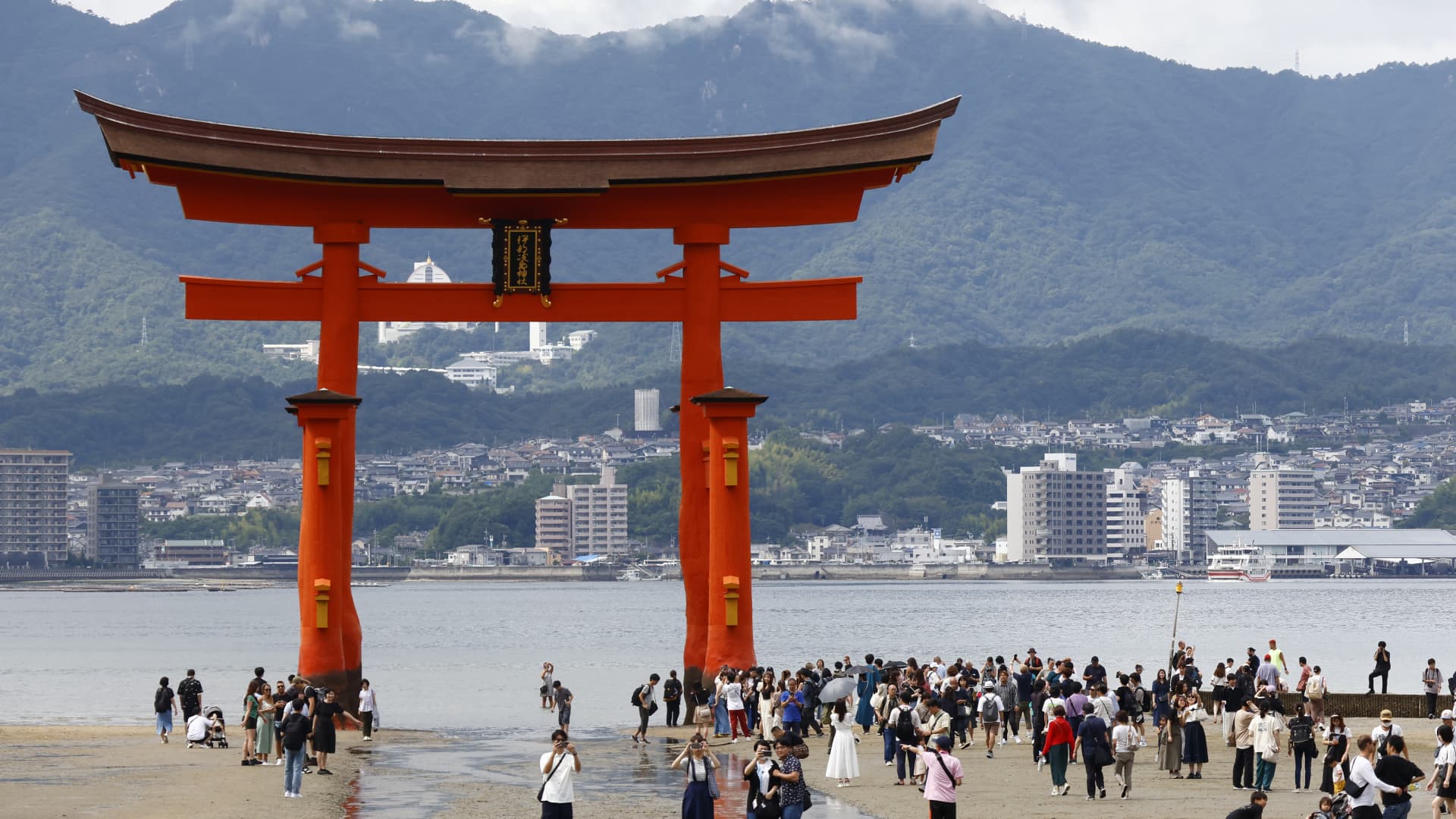
From overtourism to no tourism — and back again.
Many cities have come full circle to worrying about too many tourists rather than too few.
The rise of budget airlines, short-term home rentals and cruise ships are part of the problem, said Lionel Saul, a research assistant and visiting lecturer at EHL Hospitality Business School.
But social media, online influencers, movies and television shows are too, since they drive many people to the same places, said Tatyana Tsukanova, a research associate at the same school in Lausanne, Switzerland.
Get top local stories in DFW delivered to you every morning. Sign up for NBC DFW's News Headlines newsletter.
"They just come, take a nice selfie, publish them on social media, increase the popularity of this place … and leave," she said.
The pool of travelers is growing. The United Nations estimates the world population will reach 8.5 billion in 2030. And an additional 50 million international tourist arrivals are expected per year — mostly from Asia — between now and 2030, according to the U.N.'s World Tourism Organization.
Money Report
What's being done
Residents of the tiny Austrian village of Hallstatt — rumored to be the inspiration for Disney's blockbuster "Frozen" franchise — built a wall at a popular lookout point after tourism hit fever pitch following the town's appearance in a South Korean television series, said Tsukanova.
"They faced maybe around 1 million tourists a year for … 800 residents," she said.
But the wall didn't last long. After online backlash, village officials took it down, said Tsukanova.

Other cities and sites are placing a cap on daily visitors (Machu Picchu in Peru, the Acropolis in Athens, Borobudur in Indonesia, beaches in Sardinia) and restricting large cruise ships (Venice, Bora Bora).
But one city goes even further than that, said Saul: Amsterdam.

The city — which Saul called a "pioneer city in fighting overtourism" — has cracked down on coach buses, tourist shops, new hotel openings and Airbnb-style home rentals, according to the Guardian. It's also considering banning cruise ships and moving the city's famous red-light district out of the city center.
The Dutch capital launched a unique travel campaign in April telling some visitors – namely young, male British tourists — to "stay away" if they're traveling to the city for drugs or parties.
Fines and fees
Some cities are taking aim at travelers' wallets, leveling fines for bad behavior. Venice fines travelers for consuming drinks or food on the ground, swimming in the canals and walking around in swimwear.

Starting next year, the city is trialing a new tactic: a $5 fee for daytrippers.
New tourism taxes are set to start in Valencia, Spain; Manchester, England; Thailand; and Iceland, said Ivan Saprov, founder of the U.S.-based travel tech company Voyagu. Bali, too, will tax travelers 150,000 rupiah ($10) starting in February 2024, according to local reports.
But fees connected to sustainability aren't as hard a pill for travelers to swallow — as long as they are disclosed, Saprov told CNBC.
"After speaking with our clients, we were pleasantly surprised by the positive feedback," he said. "Almost 40% of them are ok and in favor, as the revenue generated can be used to create enjoyable facilities and services for both tourists and locals."

Some travelers supported Bhutan's $200 per day Sustainable Development Fee, which was announced in 2022. But others called it elitist. Since then, the country has reduced the fee twice to attract visitors.
"Finding the balance is very complicated," said Saul.
Economic restrictions are just half measures, said Tsukanova, adding that research shows fines and fees alone don't prevent overtourism. Collaboration — between cities, sites, local businesses and residents — is needed too, she said.
Managing 'tourist flow'
The United Nations World Tourism Organization secretary-general, Zurab Pololikashvili, told CNBC Travel that the key to overcoming overtourism lies in "tourist flow."
"The problem is the management of flow of people," he said, adding that new technologies can help.
The technology works by monitoring crowds and communicating updates to travelers in real time, Tsukanova said. Lidar sensors, a fixture in autonomous vehicles, are managing the flow of tourists in towns in northern Germany, Saul wrote in an article published on EHL Insights.

To tackle crowding without sacrificing tourist dollars, some countries are enticing travelers to visit less-traveled areas.
Indonesia introduced its "10 New Balis" in 2016 — later reducing it to "5 New Balis" — to introduce travelers to other beautiful places in the country.
And Japanese tourism officials are pushing travelers to visit the country's rural areas, where half of municipalities are at risk of vanishing by 2040 owing to depopulation, according to The Japan Times.
Using tourism for good
Tourism must evolve and become regenerative, said Darrell Wade, co-founder of Intrepid Travel.
"One of the problems with tourism at the moment is that it is the opposite of regenerative," he said. "It's extractive — and this cannot continue for much longer."
Saul said his team is studying a regenerative hospitality business model, whereby tourists help the communities they visit.

"You don't just come … visit and then leave," he said.
He said travelers can restore coral reefs, plant vegetation, or ensure their money stays at the local level by choosing smaller hotels and family-owned restaurants.
Travelers also need to change their mindsets, said Tsukanova.
"We have the app where we can count how many countries we visited, how many percentage of the available surface we covered," she said. "Our big challenge is to educate people [to travel] in a different way."






